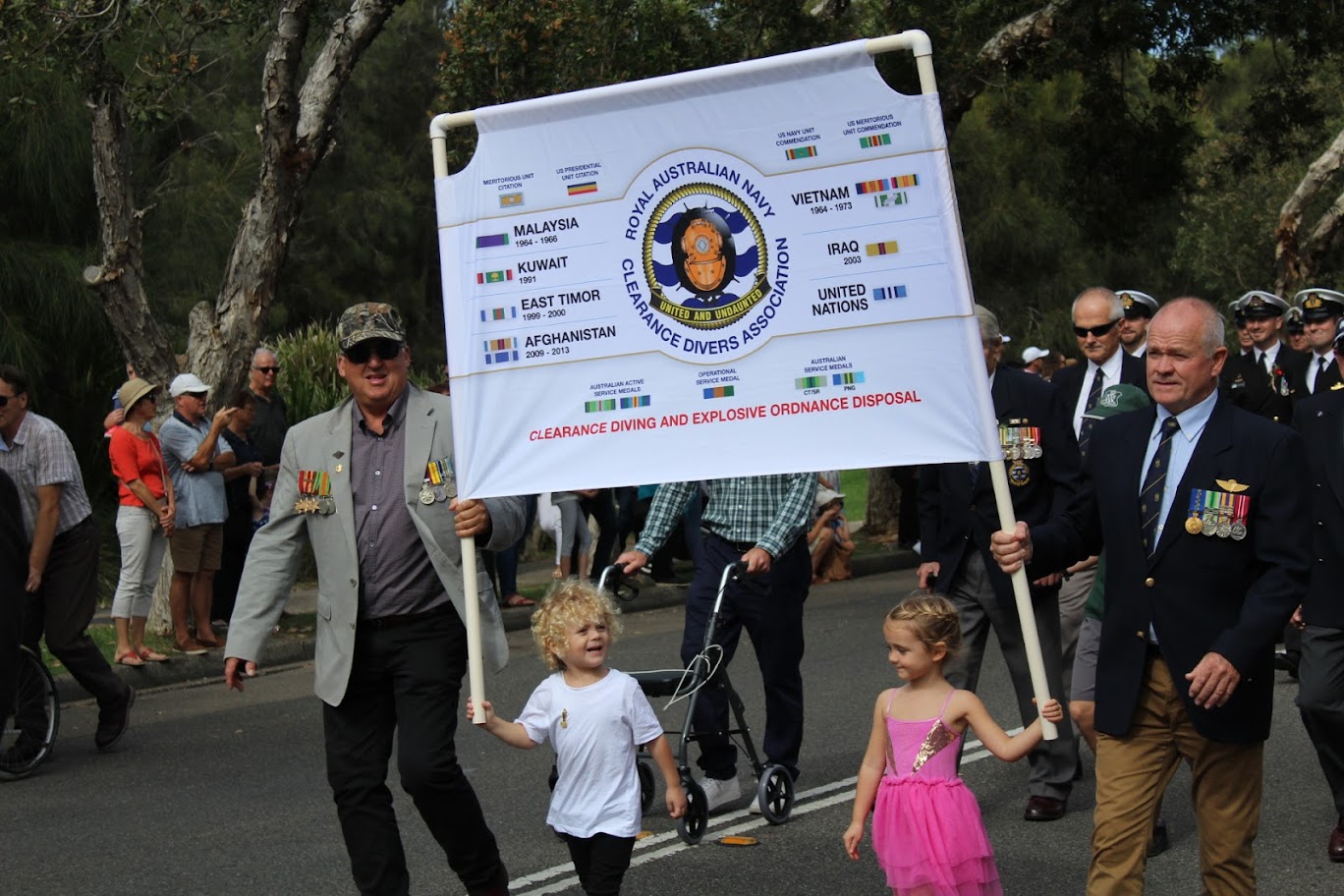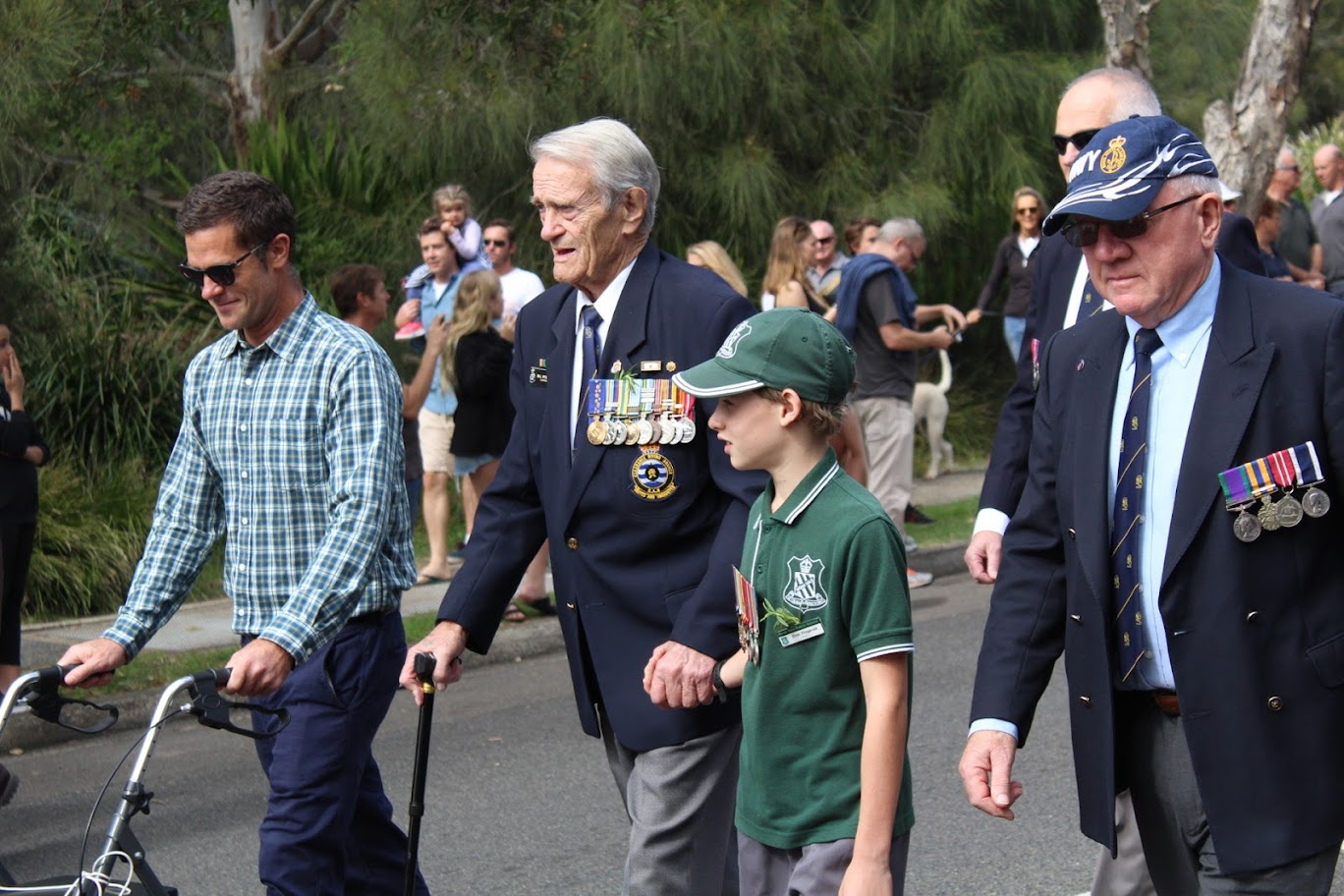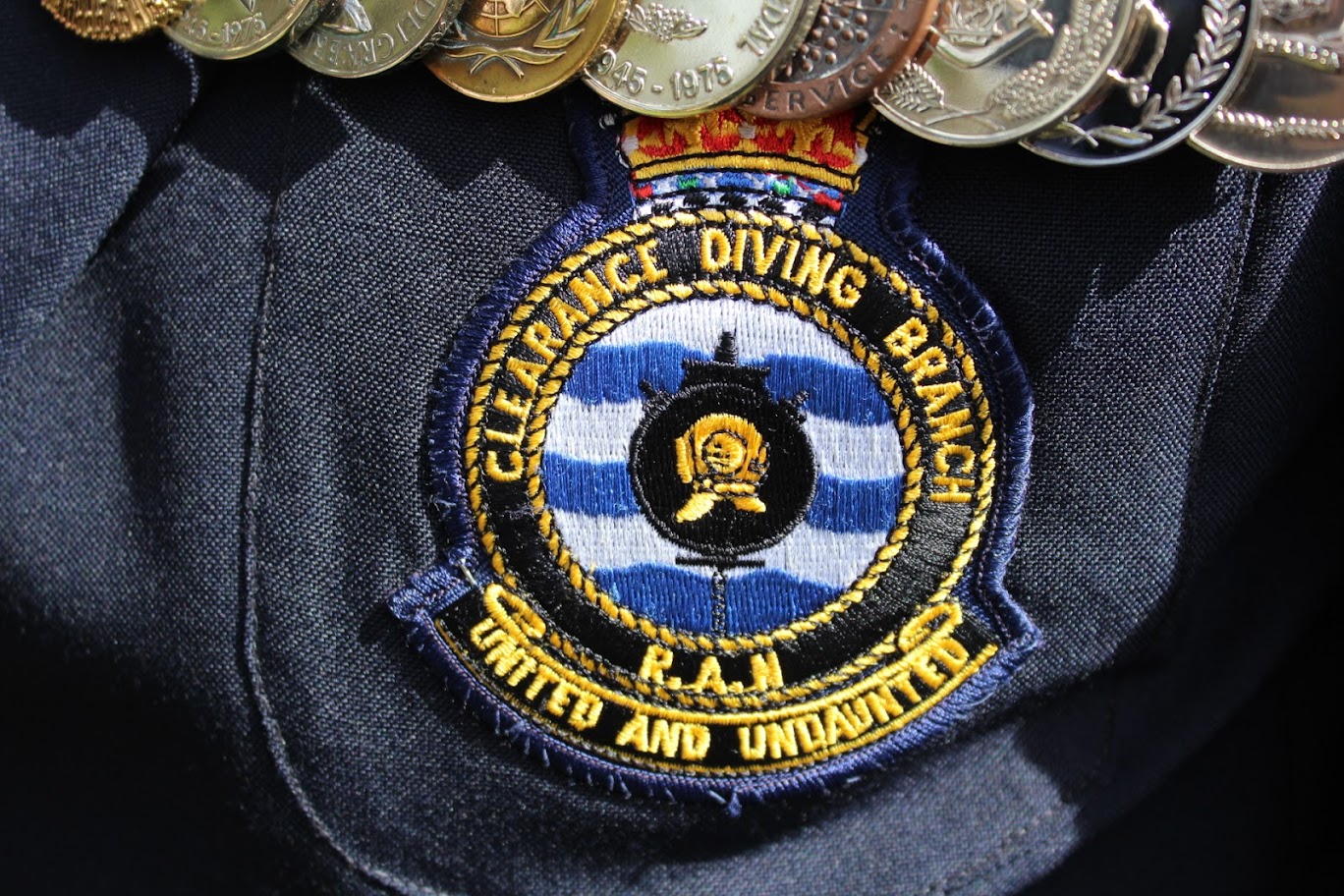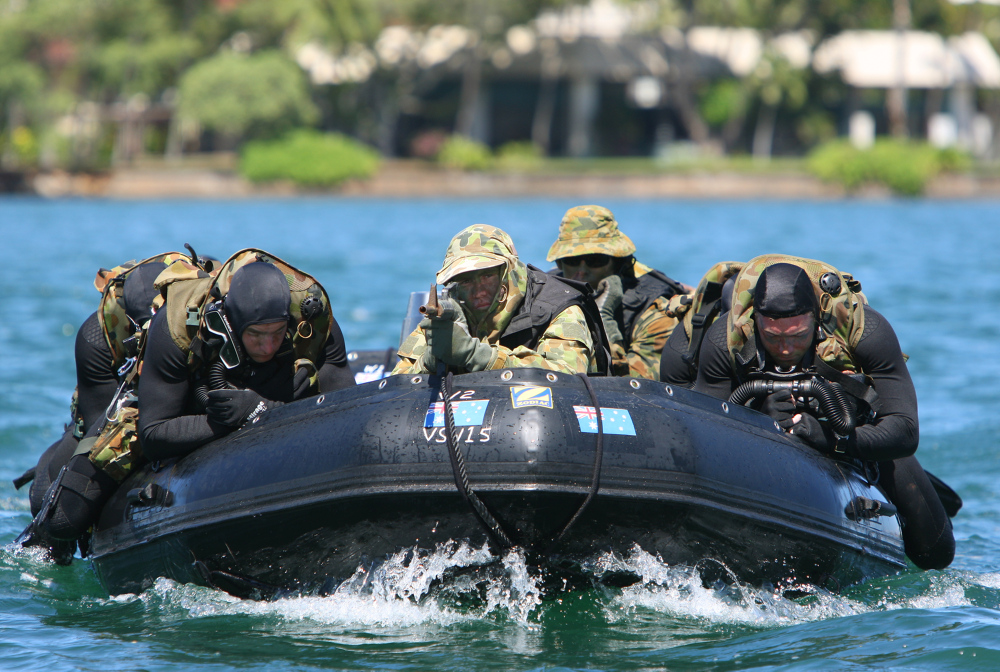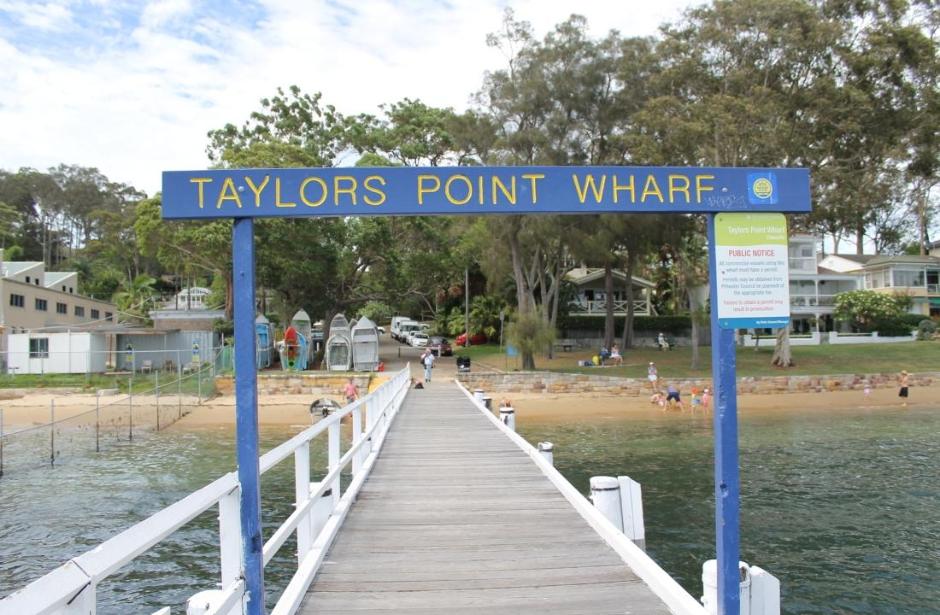That company referred to was Siebe Gorman and Company, the original inventors of the hard hat. I was their manager here in Australia and also had to travel overseas for them as well.
I still go down to every graduation of new divers and nothing has changed as far as I’m concerned, they look exactly the same as we did over 60 years ago.
What was your dad like Bill?
He was originally on the Tingara as a boy seaman in 1920. His twin, Ernie, went into Midshipman school but unfortunately Ernie was killed in Singapore in a car accident in the 1920’s.
Dad, Sydney William Fitzgerald, stayed in the Navy and met my mother in Southhampton, United Kingdom, when he was transferred there, to the London Depot for Submarine Service in February 1926 and was subsequently posted to HMS Dolphin for Submarine Training. They married in 1927. He came back to Australia and she followed him, naturally, and I was born here, March 23rd, 1929.
He was drafted to Barrow in Furness to ‘stand by’ HMAS Oxley, one of the two submarines, the other being the Otway, that Australia had for a few years.
He returned to Australia via the SS Mooltan in June 1928 and was posted to the Penguin (Otway), Anzac and Platypus and then drafted top HMAS Penguin in 1929 and was “Discharged, Engagement Expired’, on November 29th, 1929.
My father re-entered the Navy at the outbreak of the 1939-1945 war. He was a bit deceitful about what was going on there as he went to work for nearly a week and during all that time he was actually getting ready and getting kitted up. I remember he came home on a Friday evening and knocked on the door, which dad never did.
I answered the door and here as this bloke standing there in a Petty Officer’s uniform. He said, ’get your mother’.
He was a torpedo man, a torpedo gunners mate my father, did the same sort of work, Demolitions and Mines.
Mum came to the door and said ‘what are you doing?’
He said, ‘Oh, there’s a war on now Flo’, I’ve joined the Royal Australian Naval Fleet Reserve again…’ and then ‘ we don’t expect the war to last longer than four or five years.’
“but, what’s happening?’ mum said.
“I’m going to the Australia.’ Dad answered, the Australian heavy cruiser.
“how long are you home for?’ mum asked.
“I’m sailing on Monday.”
So he left on the Monday and we didn’t see him again for two and a half years.
He went over to the U.K, escorted the convoys, then transferred from the Australia to the Nestor. The Nestor was sunk in the Mediterranean by super dive-bombers. He then went into Alexandria and they kitted him up, the Salvation Army gave him clothes.
Survivors from HMAS Nestor onboard HMS Javelin with their salvaged ship's bell. Photo courtesy RAN archives.
He was commissioned then as a Gunner T. they put him to work in London during the Battle of Britain in bomb and mine disposal during The Blitz.
He eventually came back to Australia after two and a half years; his Cdr., Cdr. Rosenthal (Cdr. Alvord Sydney Rosenthal, DSO and Bar, RAN), brought the longest serving members of the ship back with him.
Dad then went to the Warramunga, another destroyer, Tribal class destroyer.
So his continuation, of not only loyalty to the RAN but the fact that he was doing torpedos, firing torpedoes, Demolitions and that work, is a continuation in me.
So it was inherited in fact.
Sydney William Fitzgerald, born November 5th 1904 – my Irish grandfather decided to call him ‘Sydney’ because he was born in Sydney. There was a few quirks about my grandfather. There’s three pictures – Warrant Officer Fitzgerald, Army, Senior Commissioned Gunner T Sydney William Fitzgerald, and Chief Clearance Diver, William Fitzgerald, in the Avalon Beach RSL’s Memorabilia Cabinet.
To me this is not only my heritage but a heritage of men who believe in their country, believe in defending their country and love living in their country.
The RAN Clearance Divers have been front and centre in every conflict since being formed. How many lives would you estimate the Clearance Divers have saved?
No one could rightly answer that, but our Honours List is astronomical. From the four Australians that worked in BND in the U.K, who all received the George Cross and medals right through to 2001 we have been very highly decorated and honoured. Since then we’ve had both Gulf Wars, Kuwait, Afghanistan and members are still deployed overseas even now. So the Honours, Awards, Letters of Commendation would be some indication of the great service these people of the Clearance Divers Branch have done. Many of these still working cannot be identified in the current climate but if people were aware of what their Navy has done and is still doing I think they’d be justified in giving them more than a long applause.
The USS Peary – what was involved there?
The USS Peary was a Clemson class destroyer of the United States Navy. She was commissioned in 1920 and sunk by Japanese aircraft at Darwin in February 1942. She was a four stack destroyer that, in 1942, and had been sunk in 89 feet of water. She was the first destroyer of the Asiatic Fleet to be sunk in World War Two and 88 officers and men were lost that day.
_sinking_at_Darwin_1942.jpg?timestamp=1494090189339) LOSS OF U.S.S. PEARY
LOSS OF U.S.S. PEARYSuffered Five Direct Hits
PERTH. April 8.— The U.S. destroyer, Peary, suffered five direct hits in the first Japanese raid on Darwin on February 19, survivors said here. . .
A Washington communique last Saturday announced the loss of. the Peary (1,138 tons) at Darwin. Fifty-three Injured members of the Peary's crew are in a Perth military hospital Laurence T. Farley, 28, of West Virginia, who was foreman watertender on the Peary, said that before the Peary went to Darwin she had Buffered casualties, but little damage, in Jap raids in the Philippines.
'One or the bombs that hit the Peary at Darwin struck a galley passage in which a shipmate and I were,' Farley said. 'I was badly burned, and my eyes were affected. With my' companion, I went on deck and dived, overboard. I swam towards the hospital ship Manunda, but, as I neared her, I saw the Japs attack her. I turned and swam back. My burned legs and arms and shoulder were greatly troubling me. As I swam I saw Jap planes machine-gunning men in the water. Some were shot as they swam. Others sank exhausted. Bullets smacked the water all round me, but I was not hit. By then a bomb blast had so affected me that I could not see. A lifeboat from the Manunda picked me up and took me on board. As a result of treatment here, I have made a wonderful recovery.' I half expected to be a cripple.' LOSS OF U.S.S. PEARY (
1942, April 11).
Townsville Daily Bulletin (Qld. : 1907 - 1954), p. 4. Retrieved from
http://nla.gov.au/nla.news-article63555330
There were six torpedo tubes on each side of the vessel, each warhead consisted of about 810 pounds of high explosive fitted with vane-type contact pistols. When moved by the tidal stream, these pistols would be screwed into the detonator by the incoming tide and back out again – we hoped! – with the ebb flow.
Armed with book references on American ordnances that we read prior to the dive, we decided that they must be safe and proceeded to clear a majority of the USS Peary's ordnances that hadn’t become deteriorated by salt water or corrosion.
During our next dive onto the deck of the USS PEARY, we opened the rear door of one of the torpedo tubes and I said, with the 5561A you can just spit your mouthpiece out and talk into the full face mask, “Get in and feel if the propellers are still there.”
The other diver wriggled head-first into the narrow torpedo tube to feel for the propellers. While he was doing that, I picked up an old guard rail stanchion and gave the torpedo tube a bloody great whack! The diver swam backwards out of the tube like a cork out of a champagne bottle!
What was the best part about being at Pittwater for you?
Well, clearly it’s a beautiful place and we did good work there. Training exercises still occur at Pittwater – swimming on pure oxygen, they have to be able to run and run and run, and do and do and do; physical fitness is very high for this branch of the Service. This is a very hard course to complete, and they have to be tested in this way. That’s why the camaraderie is so strong in the Clearance Diving branch of our Navy. We are United and we’re Undaunted.
Clearance Divers have to be extremely fit, highly intelligent, that is have above average intelligence, and have it within them to do and do.
Once you’re a Clearance Diver you are always a Clearance Diver, even when you go to God.
We have our own prayer:
‘Oh God in Heaven, hear our plea,
for Clearance Divers ‘neath the sea,
While in the ocean’s dark embrace,
Keep us, Thy sons, within Thy Grace.
And hear us Lord,
O Thou who saves,
For us They servants,
‘neath the waves’
I think that originated with the Padre aboard the HMAS Perth when that was serving during the Vietnam conflict.
In the Clearance Divers Roll of Remembrance is:
‘When called by God to report for the last time, no better rely could be given by any man to His question “What did you do with your life?” than to be able to reply; “I was a member of the RAN Clearance Diving Branch.”
Now the crucifix that I put in that was a Franciscan crucifix that I located, through computer systems, and had been lost in the Caribbean in a ship in the 1600’s. So that crucifix, being Franciscan, is for all denominations. There are 125 Clearance Divers who have gone to God since 1955.
The camaraderie is evidently very strong - you are clearly a team that plays and stays together. As another instance, that water polo photo on the Association's website - what's that about Bill?
We won that for years in a row - I had them training in full suits so by the time they came to play they could literally run across the water!
Standing: Bill Fitzgerald, Phil Kember, Sergeant, Vic Rashleigh, Peter Hermans, Rip Kirby.
kneeling: Hank Egberts, Wally Kolas, Doc Robbie (medic), Denis Appel, Noel Stewart, Mick Cook.
Loraine Crapp waterpolo trophy.
Lorraine Joyce Thurlow, AM (born 1 October 1938), née Crapp, is a former Olympic swimming champion representing Australia. In world swimming history, Crapp earned a place as the first woman to break the five-minute barrier in the 400 m freestyle. Born in 1938, as a young girl Crapp lived with her parents at Jervis Bay where her father was with a Royal Australian Air Force Air Sea Rescue Unit. By the age of five she was a competent swimmer. When the family moved to Mortlake she joined the Cabarita Swimming Club and by the age of 12 was the winner of all her age events in freestyle, backstroke and breaststroke.
In 1952, Crapp was selected in the New South Wales team for the Australian Championships in Melbourne, where she came second to Olympian Judy Davis in the senior 880 yards. She won the junior 200 yards and she was still only 13 years old.
In 1956 Crapp broke 17 world records and by the end of the year she was the world record holder for 110 yards, 200 m, 400 m and 880 yards. She was the first Australian swimmer, male or female, to hold world records in all freestyle distances at the same time. On 25 August 1956 at the Australian National Training Camp at Tobruk Pool in Townsville, Queensland, she became the first woman to break the five minute barrier for 400 m freestyle; along the way she broke three other world records – 200 m, 220 yd and 440 yd. Although she improved on all times later in her career, her four world records in one swim (she slashed 18.2 seconds from the previous 400 m record to clock 4 min 47.2 seconds), made headlines around the world.
She competed in two Olympic Games — the 1956 Summer Olympics and the 1960 Summer Olympics. She won two Olympic gold medals and one Olympic silver medal in 1956 and one Olympic silver medal in 1960.
During her career Crapp set twenty-three world records and won 9 Australian championship titles.[6] In 1972, she was inducted into the International Swimming Hall of Fame, and in 1986 into the Sport Australia Hall of Fame. On 8 June 1998, she was named as Member of the Order of Australia for "service to sport, particularly swimming at national and international levels, and to the community through the promotion of sport and the benefits of a healthy lifestyle."
On 8 February 2000, Crapp was awarded the Australian Sports Medal in recognition of her and team mates efforts in winning the 4 × 100 m freestyle relay at the 1956 Olympics. The same year she was one of the eight flag bearers at the opening ceremony of the 2000 Summer Olympics in Sydney. On 1 January 2001, Crapp was awarded the Centenary Medal for "service to Australian society through the sport of swimming."
Lorraine Crapp is one of nine "Legends" of the Path of Champions at Sydney Olympic Park Aquatic Centre.
It sounds like you have done what you love Bill, all your life - are you happy with what's been done?
My life has been a life I would live over and over and over again. My wife says to me quite often, ‘all you love is the Navy’. I reply, ‘that’s not quite true, you my dear, are equal first!’.
I first met Madge in 1948 but had to wait until August 1st 1949 before I could marry her; we’ve been married – we’ve been married 67 years now, soon 68 years.
Bill and Madge, earlier years
The Clearance Diving Branch of the Navy is a very special branch band of brothers.
If you are United and Undaunted nothing is impossible.
Bill and Madge Fitzgerald - 2016 - just prior to a RAN function - photo by and courtesy Rebecca Fitzgerald
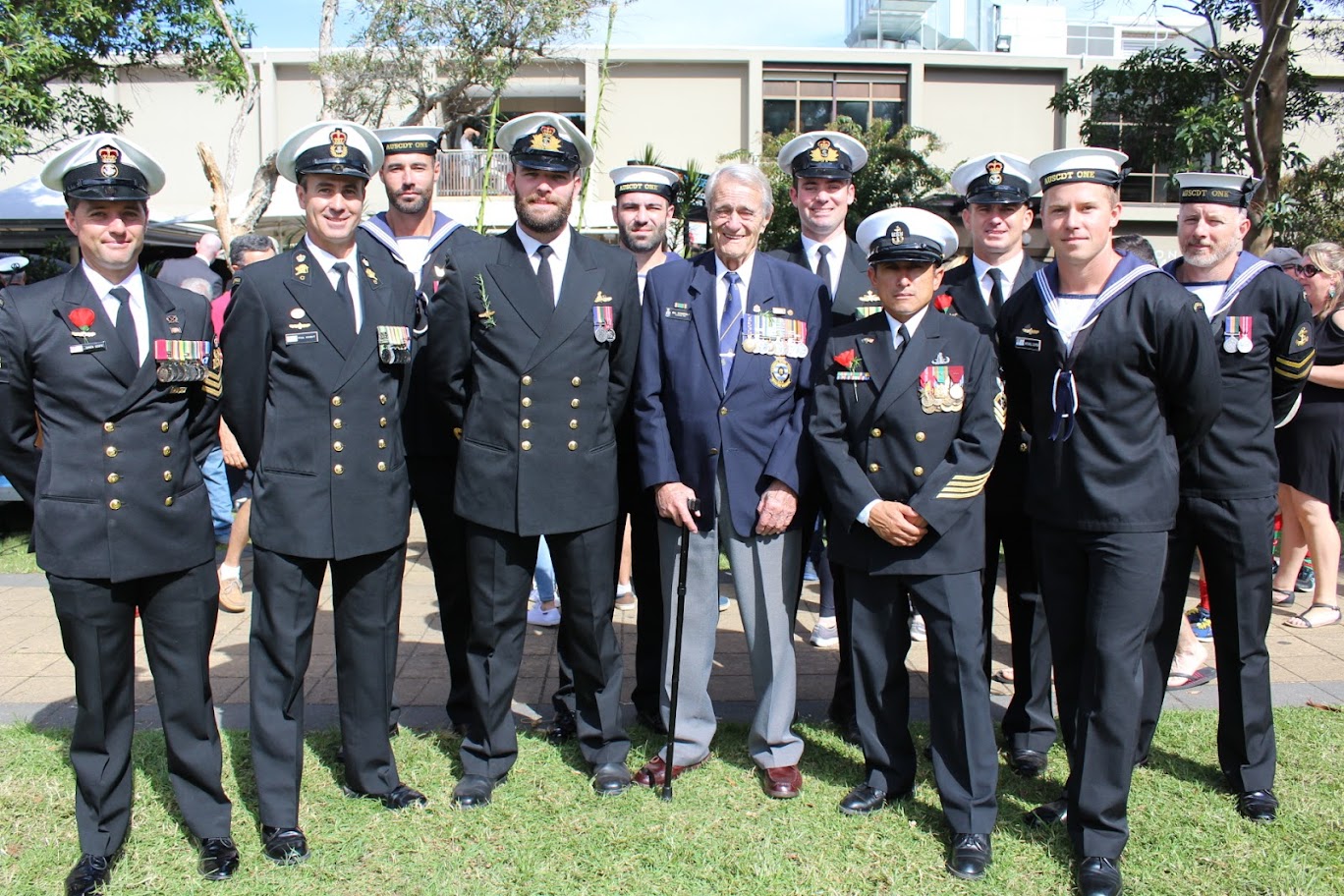
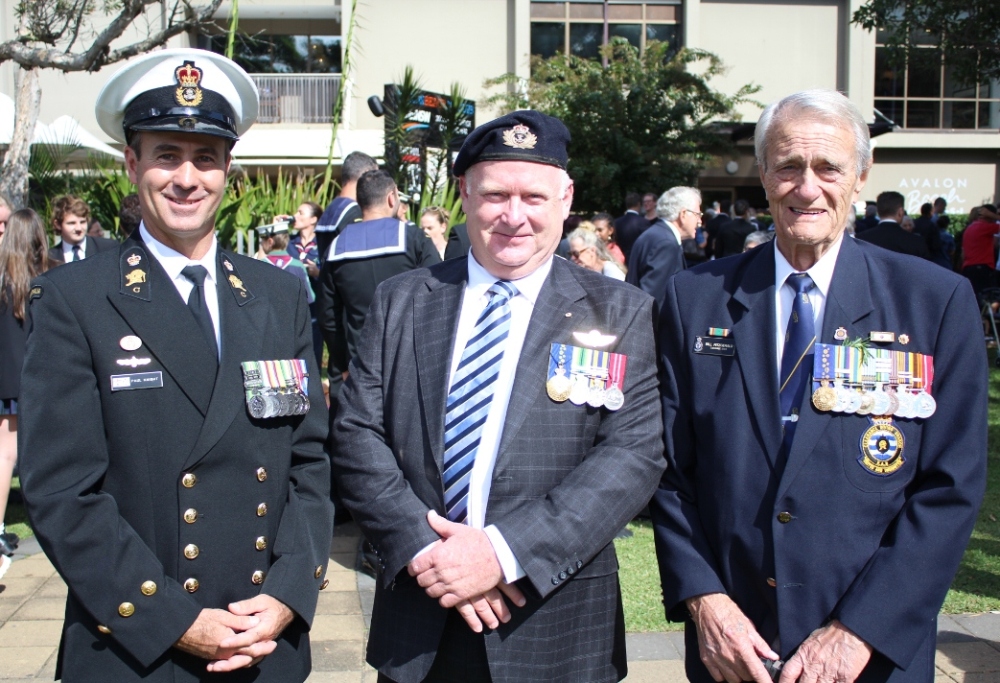
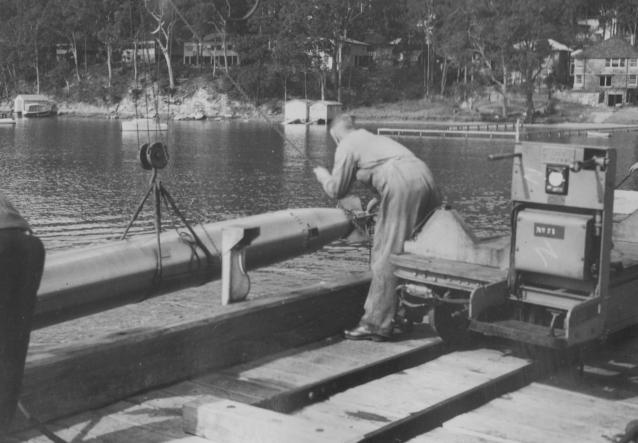 R.A.N. TORPEDO RANGE, PITTWATER, N.S.W.
R.A.N. TORPEDO RANGE, PITTWATER, N.S.W.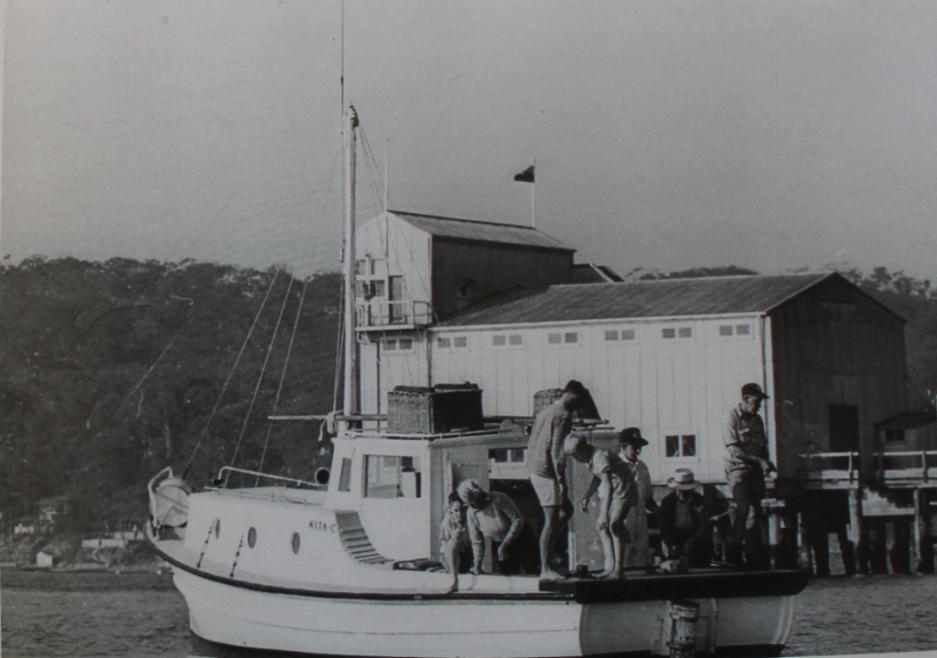
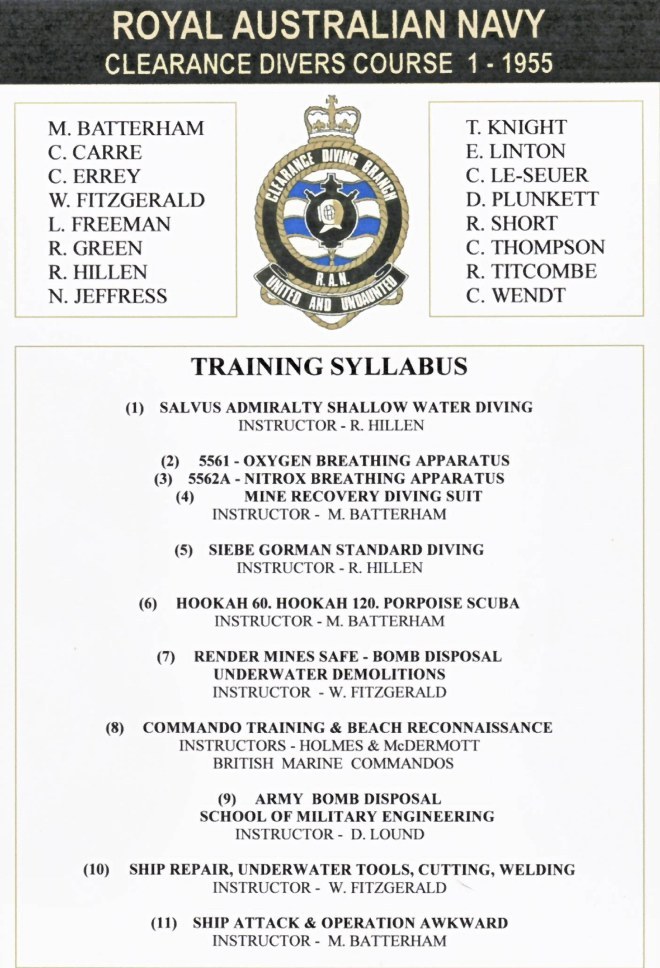 You then moved over to Clearance Diving, how did that occur?
You then moved over to Clearance Diving, how did that occur?

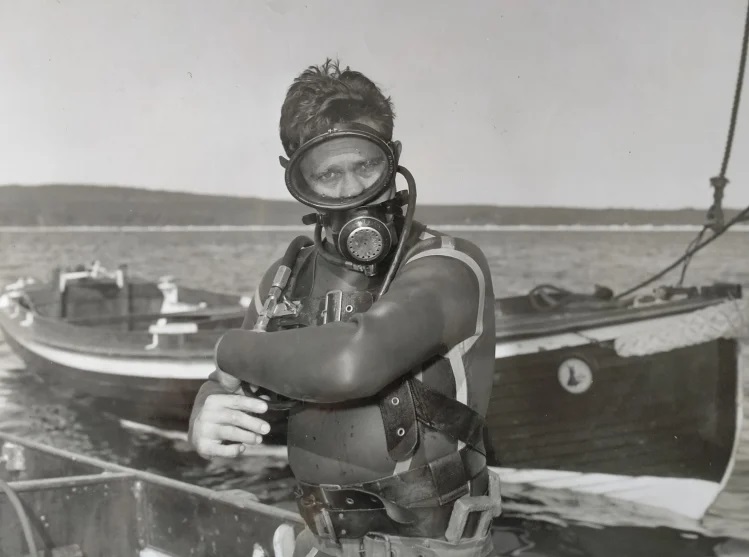
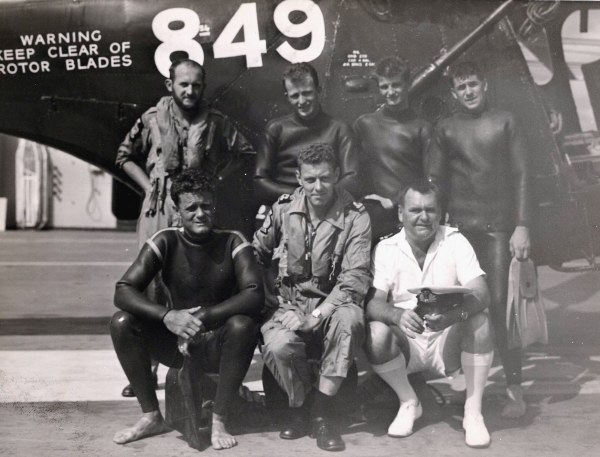
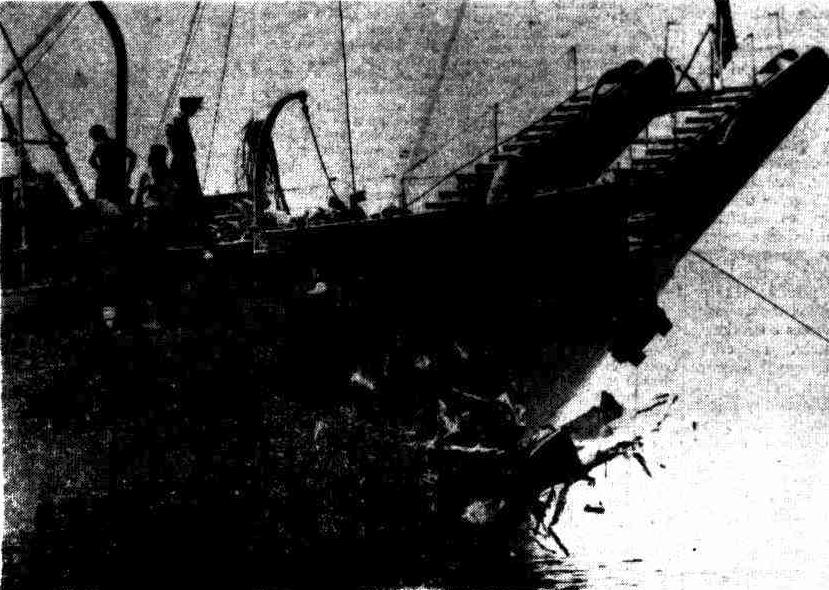
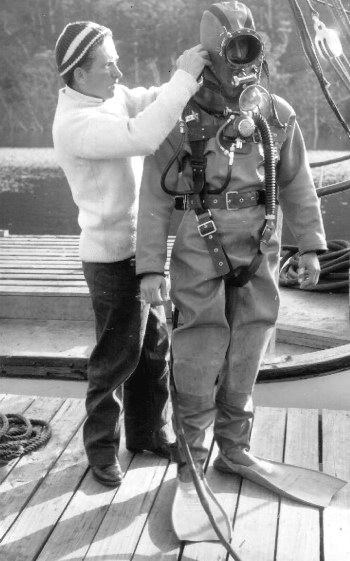
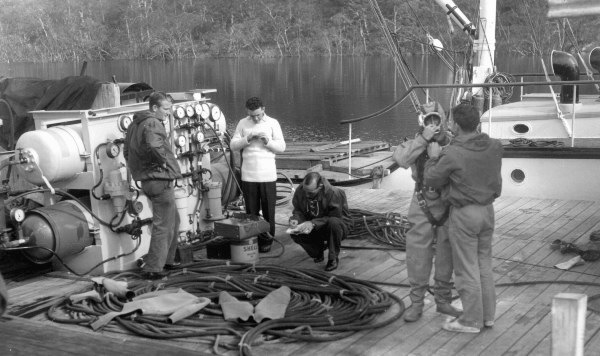
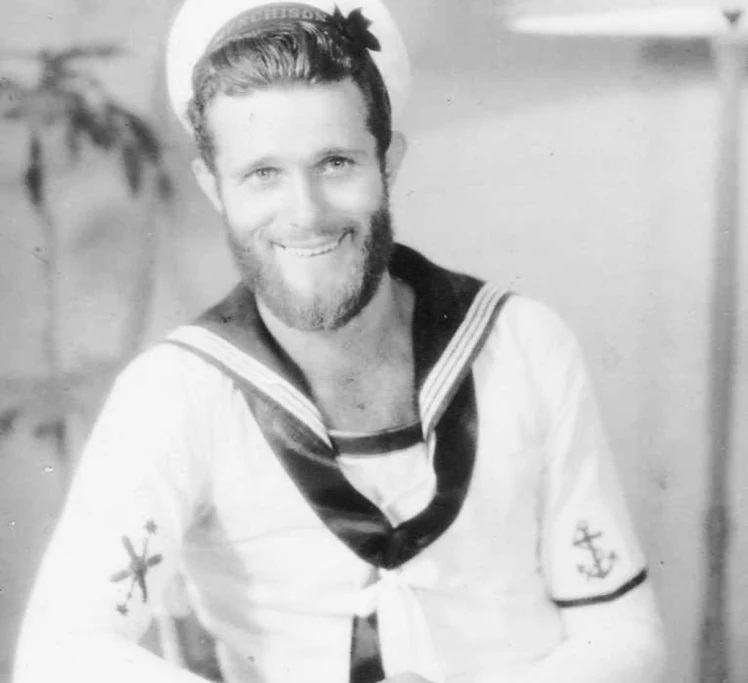
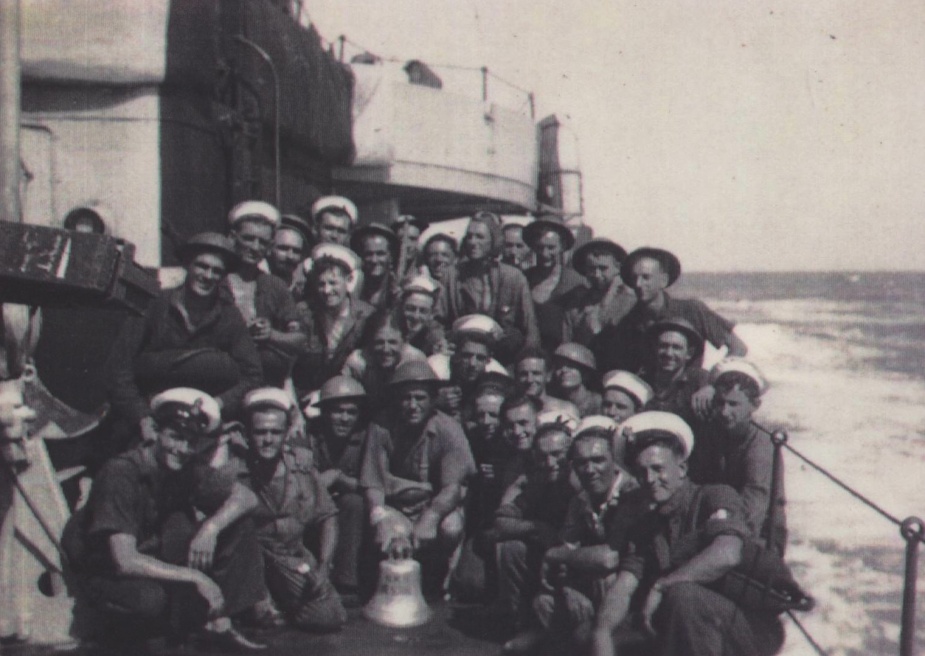
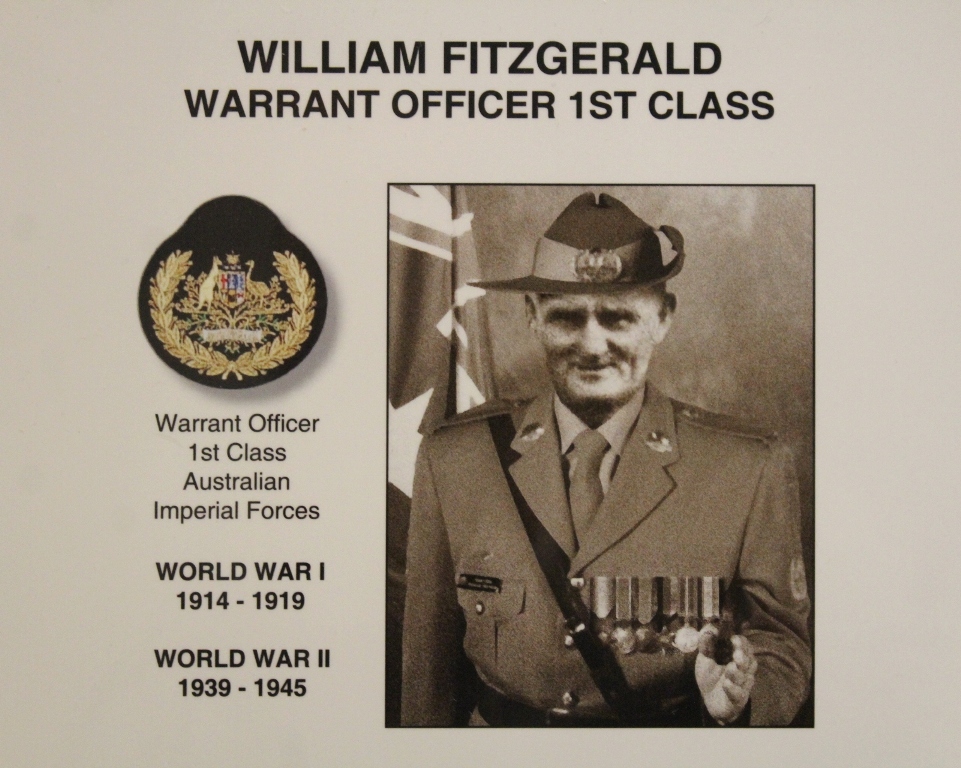
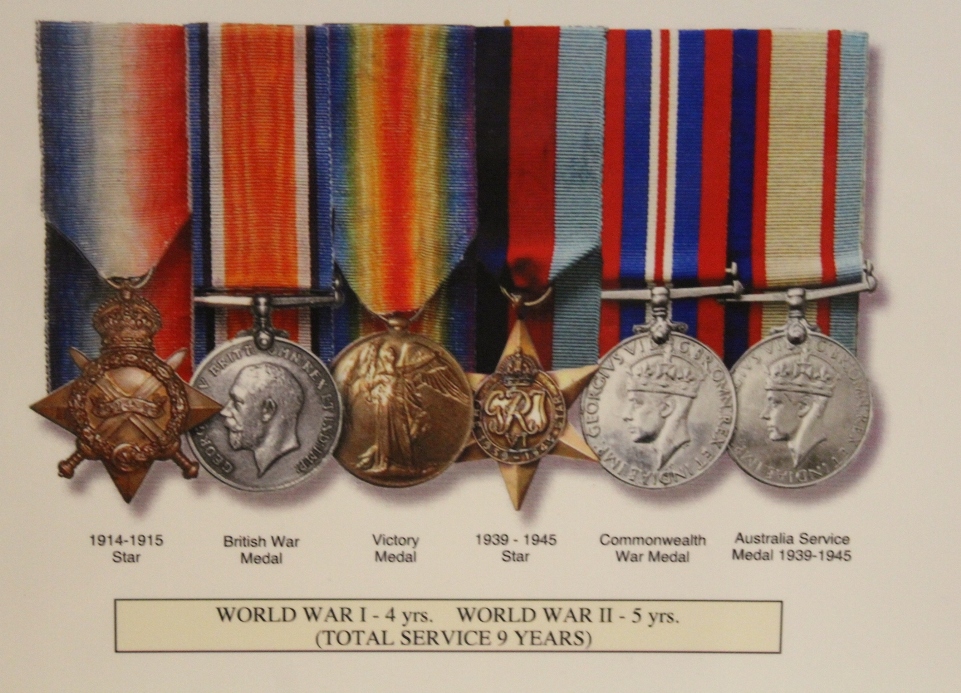
_sinking_at_Darwin_1942.jpg?timestamp=1494090189339) LOSS OF U.S.S. PEARY
LOSS OF U.S.S. PEARY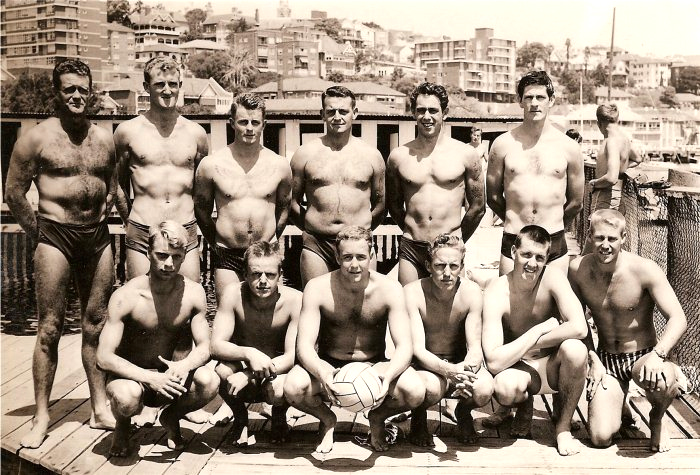
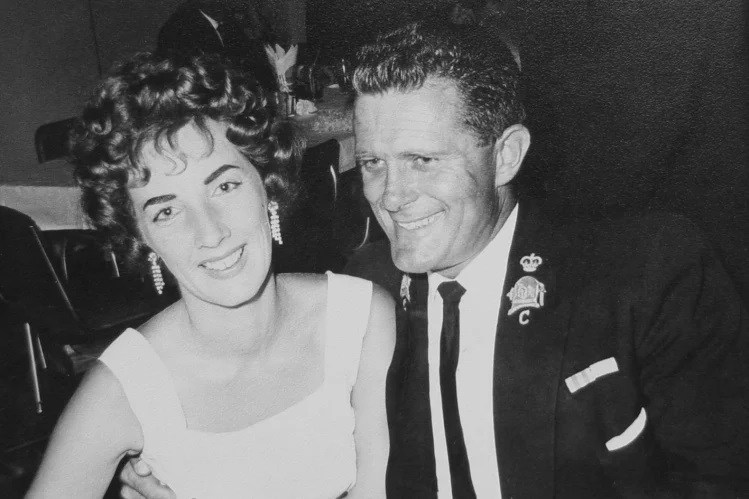
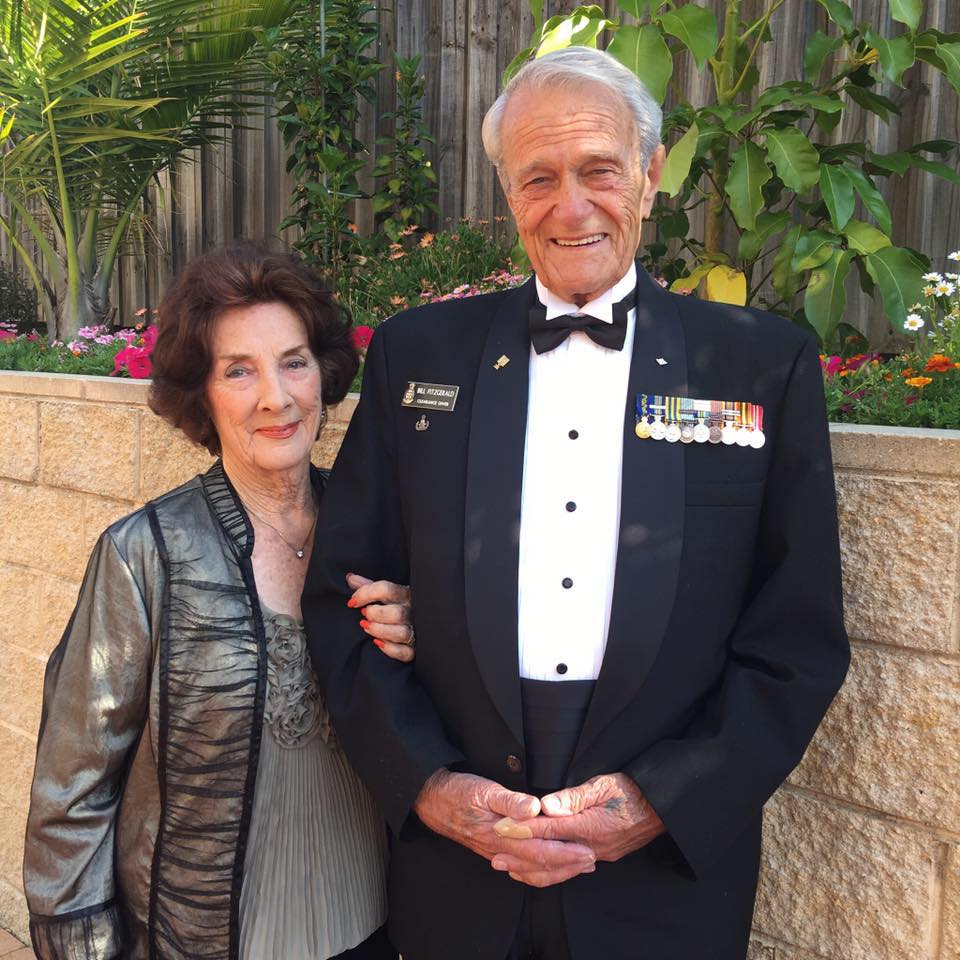
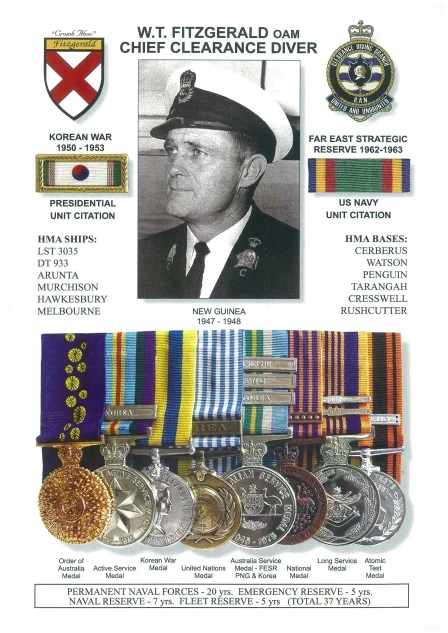 History of Demolitions training. Researched and compiled by Russ Cronin. RAN Clearance Divers Association webpage: http://www.rancd-association.com/old/id69.htm
History of Demolitions training. Researched and compiled by Russ Cronin. RAN Clearance Divers Association webpage: http://www.rancd-association.com/old/id69.htm